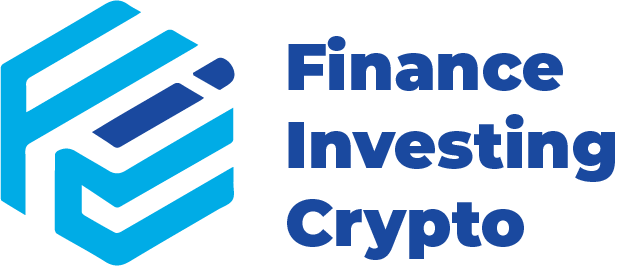Disclosure: The views and opinions expressed here belong solely to the author and do not represent the views and opinions of crypto.news’ editorial.
When it comes to money, every person ultimately has the same basic needs: we need to be able to save it, send it, and spend it, safely and simply. But even in 2025, billions of people are still left out by the formal financial system. And this happens not just in the emerging markets, but ironically, also in the world’s leading nations.
Summary
- Tens of millions remain underbanked in developed markets, but blockchain has yet to deliver practical, everyday solutions due to poor UX and complexity.
- Adoption depends on relatability — successful models like Nubank in Brazil, GCash in the Philippines, and Telegram’s TON payments show that people embrace tech when it’s simple, embedded, and solves daily problems.
- Blockchain must prioritize utility over ideology — clumsy rollouts like El Salvador’s Bitcoin experiment show the risks, while stablecoins and tokenized assets offer a clearer path to usability and trust.
- Mass adoption requires simplicity — crypto must become as effortless as existing apps, making saving, sending, and spending natural; otherwise, blockchain risks staying niche for decades.
According to recent surveys, over 36 million consumers remain underbanked in North America alone, while there are over 20.2 million adults who are underserved in the United Kingdom. Whether it be due to a lack of infrastructure or a mistrust in banking, this financial exclusion continues to stifle economic mobility and limit access to basic opportunities. Many still see blockchain as a revolutionary solution, offering faster, cheaper, and borderless financial services to the world. However, in practice, we haven’t yet delivered on that promise for everyday users.
Today, cryptocurrencies and blockchain, more broadly, are perceived as speculative ways to extract value, rather than practical tools for solving real-world problems. The technology is often clunky and intimidating for the average user, with poor UX that feels designed for developers rather than everyday people. Setting up wallets, managing private keys, bridging assets, and navigating unfamiliar interfaces introduces friction at every step. These processes are not only complicated but also unforgiving, where a single mistake can mean losing funds permanently. Adoption has been sluggish because people don’t want innovation for innovation’s sake — and they especially don’t want heavy-handed industry attempts to onboard them to a new world that they don’t understand or see value in. They want intuitive solutions to the problems they experience every day.
This is why the future of blockchain won’t be won by those who shout the loudest about decentralization or tokenomics — it’ll be won by those who simplify the complex, provide killer utility, and integrate the technology into the apps people already trust.
Global adoption requires relatability
Often, inspiration comes from markets that don’t have an established legacy financial system. Just look at how innovation in digital banking has reshaped Brazil. Nubank transformed financial access by giving users a simple, mobile-first way to manage money without the friction or barriers of traditional banks. The model thrived because it aligned with existing user behaviours and addressed specific local needs. While the technology was new to consumers, it immediately solved problems encountered daily. Most importantly, these consumers didn’t need to understand how the underlying technology worked.
This is where user experience becomes the winning element, by making financial tools feel natural in everyday life. Take GCash in the Philippines, which has become a hub for all financial operations: paying bills, sending and, even more importantly, receiving remittances, shopping, and accessing credit. The same principle can apply to blockchain. We see this with platforms like Telegram, which now allows TON-based payments directly in-app, showing how blockchain features can be made easy and natural as sending a text. By keeping the complexity behind the scenes, these platforms illustrate how crypto can become invisible yet useful, blending into the tools people already rely on.
Of course, Nubank worked for Brazil’s 200-million population. Scaling that model globally presents a different set of challenges: reaching diverse populations, navigating different regulatory environments, and integrating with existing payment habits.
Telegram’s growth to over a billion users illustrates how platforms with large, engaged audiences can serve as an effective distribution channel for new services, including blockchain-based financial tools. By embedding financial features quietly, it becomes possible to offer capabilities like borderless payments or tokenized assets without requiring users to learn a new system. For most people, these features wouldn’t feel like using crypto at all — just another reliable feature of an app they already rely on.
Building rails or barriers?
Blockchain is a way to remove barriers, but when applied clumsily, it can create them instead. Too often, developers build around ideals instead of use cases. The focus shouldn’t be on shoehorning crypto where it is not needed. Simplicity and utility must take precedence over novelty and ideology: adopting technology should be driven by clarity and clear benefits rather than the allure of innovation alone.
El Salvador’s experiment with Bitcoin (BTC) as legal tender serves as a perfect example. The Central American nation has for years been consolidating its Bitcoin position, but the initiative seems to have faced significant hurdles, including price volatility, lack of public trust, and poor adoption for remittances, which constitute a substantial portion of the nation’s GDP. Many citizens opted to cash out any Bitcoin as soon as they received it, or avoid the system altogether, underscoring the gap between theoretical promise and practical usability.
A better path forward lies with stablecoins pegged to the price of fiat currencies. These offer the price stability of fiat with the benefits of crypto: instant, low-cost transfers, and global access. Integrated into familiar apps, stablecoins could quietly power remittances, everyday payments, and even savings solutions across underserved communities. Beyond payments, blockchain could open the door to more complex financial tools for the masses. Imagine a token that tracks a selection of stocks, allowing someone in an emerging market to invest in Apple shares. This would’ve been unthinkable just a few years ago. NFTs and DeFi have the ability to redefine the meaning of ownership and have the potential to democratise access to wealth-building tools that have long been restricted to select groups of society.
Getting back to basics
The acceleration of blockchain adoption has demonstrated that the technology can grant opportunities in ways that the traditional financial system cannot. However, so far, access to these opportunities is restricted to those who are able to take the time to learn and understand how crypto works.
For a blockchain-based future to become a reality, our core focus must be on bringing simple projects to market that provide a meaningful use case for the average person. We must build a system that honors what should already be recognized: the right of every person to save, send, and spend. That means moving beyond education and making crypto as effortless as the apps people already use every day. Because if it doesn’t work for the mass consumer, mass adoption will remain not years, but decades away.










